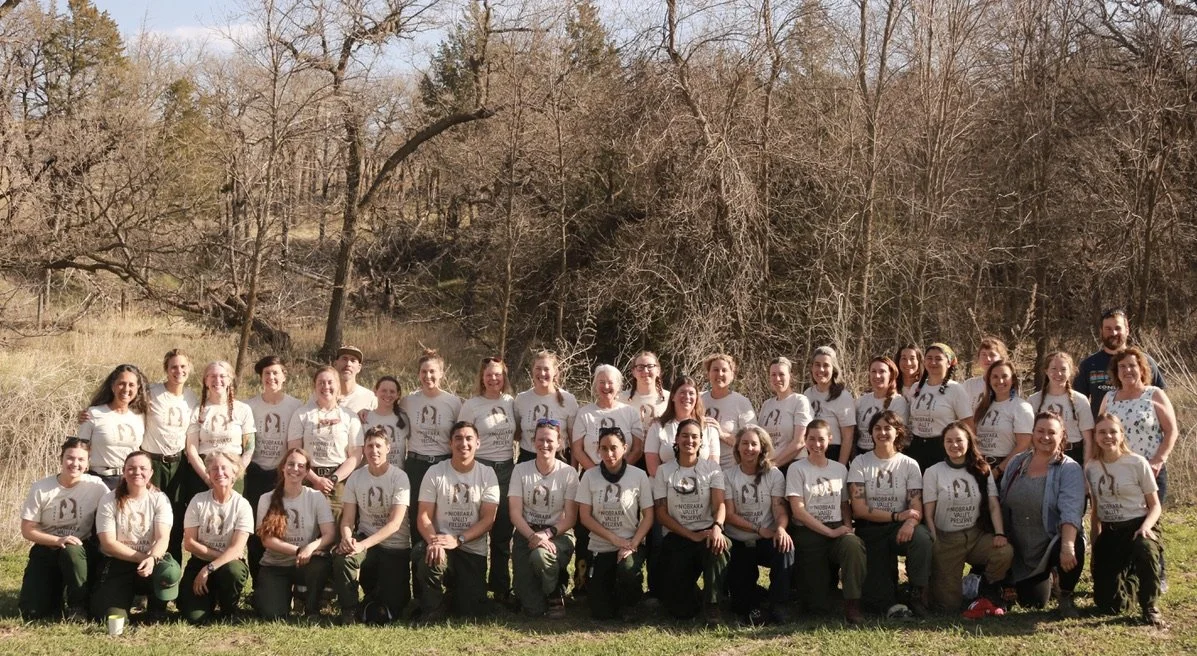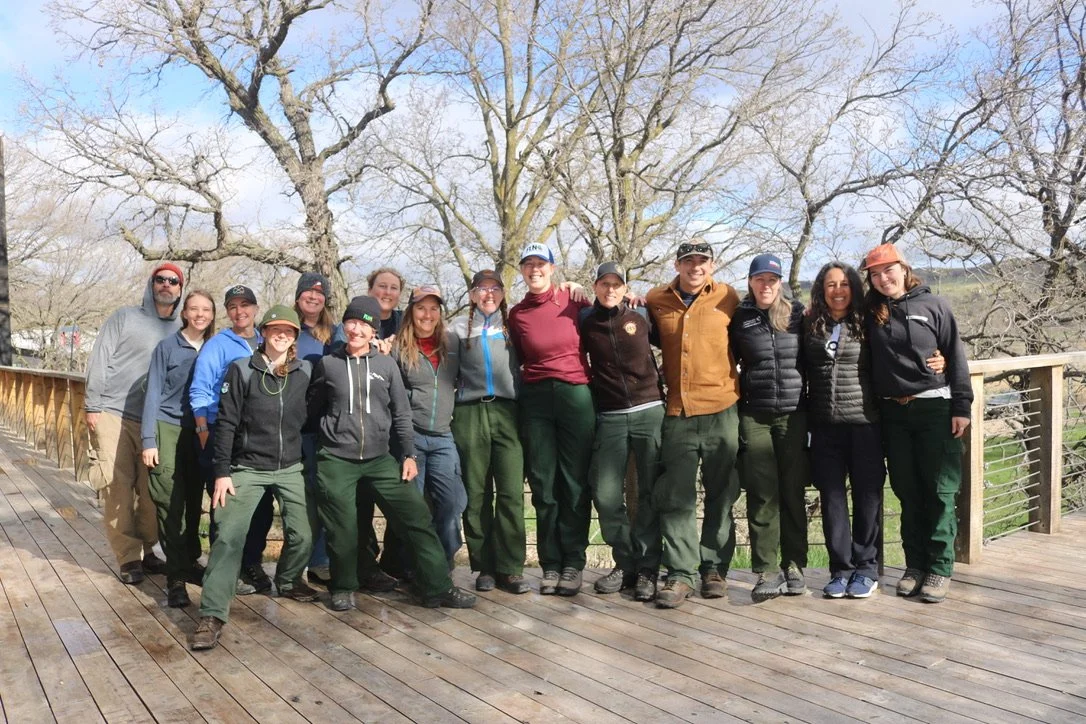By Leslie Neu, RVCC Program Manager
Leslie recently attended the 2024 Women-In-Fire Prescribed Fire Training Exchange (WTREX) at the Niobrara Valley Preserve in northcentral Nebraska. She shares her unique experience below.
When I was applying to law school, I had the option to write a diversity essay to accompany my admissions package. The intent of the essay was to allow me—a middle-class white woman—the opportunity to express how I would add to the diversity of the law school community. According to the Law School Admissions Council, white students continue to make up the majority of law schools nationwide and woman-identifying students have increased to represent more than half its entering population. How could I add to the diversity of the community?
I expressed this dismay to an admissions counselor and she quickly retorted, “But Leslie, you’re a female wildland firefighter. That has to count for something.” She had a point. Before applying to law school, I had worked for six years as a federal wildland firefighter and, while 72 percent of the federal wildland fire service is white, less than 15 percent identify as female. As an aspiring natural resource professional, my perspective working in this male-dominated field could contribute to the diversity of my new community—but how exactly, I did not know.
Fast forward to today, and I have finished law school and am working in natural resource policy and programing for Rural Voices for Conservation Coalition (RVCC). Last month, I had the opportunity to attend the 2024 Women-in-Fire Prescribed Fire Training Exchange (WTREX) at the Niobrara Valley Preserve in Nebraska. The WTREX program began in 2016 after a group of women at a traditional Prescribed Fire Training Exchange (TREX) recognized their unique perspectives as women in fire. They created the WTREX program as a shared-space for women and other diverse populations to learn and grow in fire management. Since its inception, the WTREX program has hosted or partnered on 11 events in 4 countries with over 1200 applicants and participants from over 30 foreign nations, 35 U.S. states, and 55 Tribes. And demand for the program continues to outpace capacity–of the thousands of applicants, only about 25 percent have been selected to participate.
The core values of the WTREX program focus on elevating the diverse perspectives of its participants—their cultural, social, geographic, age, employment, and gender diversity. The WTREX program is open to people of all identities, including men. The gendered uniqueness lies in its majority female leadership team. Given the male dominance of the traditional fire workforce, there can be limited opportunity for female-to-female mentorship in the profession. In contrast, the WTREX program offers female mentorship tenfold—of the dozen or so members of its incident management team, only two identified as male.
Another unique feature of the WTREX program is its commitment to creating durable relationships between participants through activities and discussions conducive to connection. Similar to team building, connection creation between people is an important aspect of successful fire management. However, the typical wildland fire “team-building” usually starts and ends in fire operations. In contrast, the WTREX program promotes connection beyond the operational; the WTREX program gets personal. The Niobrara event was one-part prescribed fire training, one-part life skills coaching. In between lessons on fire ecology, burn techniques, and medical response, we were thoughtfully led through sessions on mental health, diversity, power dynamics, and allyship. I learned how to spot the signs of wind and storm patterns in Nebraska and how to spot the signs of mental health decline in myself and my fire colleagues. I learned how fast and dynamic fuels burned out in the grasslands and how poor and ineffective work-life balance can lead to professional burnout in the wildlands. I was confronted with my own biases about diversity in fire management and was reminded of my power dynamics and privileges—my economic status, my race, my sexuality, my fire experience. I was shown how to ground myself in these advantages and use them to serve as an ally for the next generation of fire management.
Looking toward the future, the WTREX program is raising expectations for how diversity can positively influence our future relationship with fire. The program helped show me how, through my unique perspectives and experiences, I add to the diversity of my community. From my experience fighting fires, I saw fire management for what it was—a highly effective suppression team responding to risk. And from my perspective as a woman in fire, I saw fire management for what it is—an often underserved, over-worked, and passionate workforce pushing for change. And as a WTREX participant and policy advocate, I now see fire management for what it can be—a diverse community of compassionate and strong allies for landscape and human resilience. And that has to count for something.





